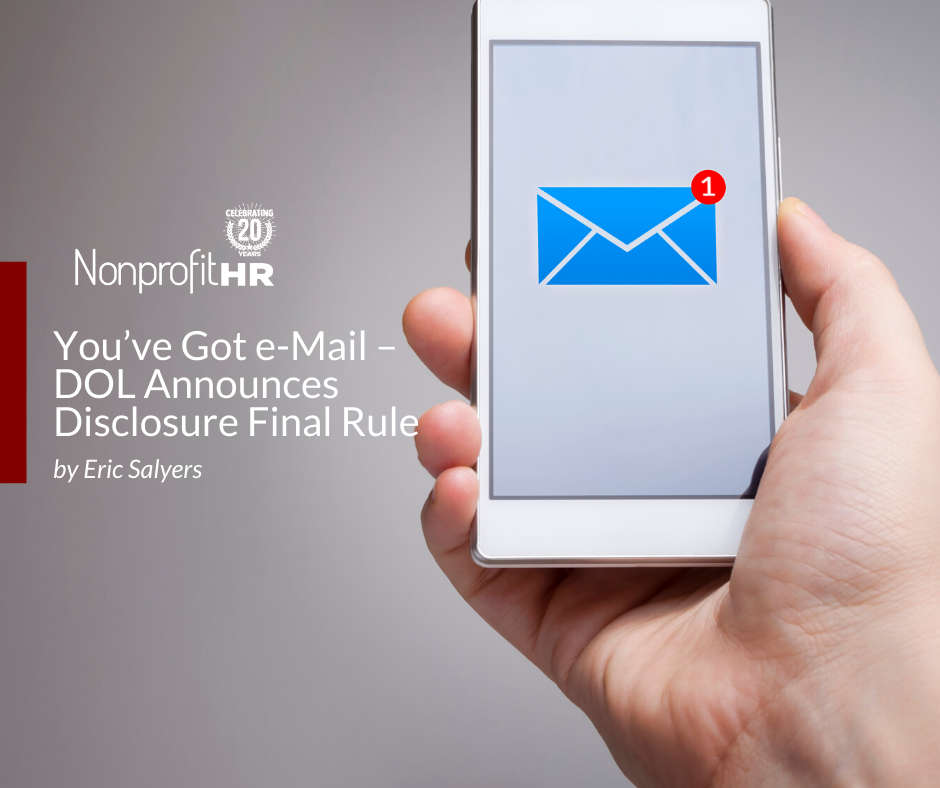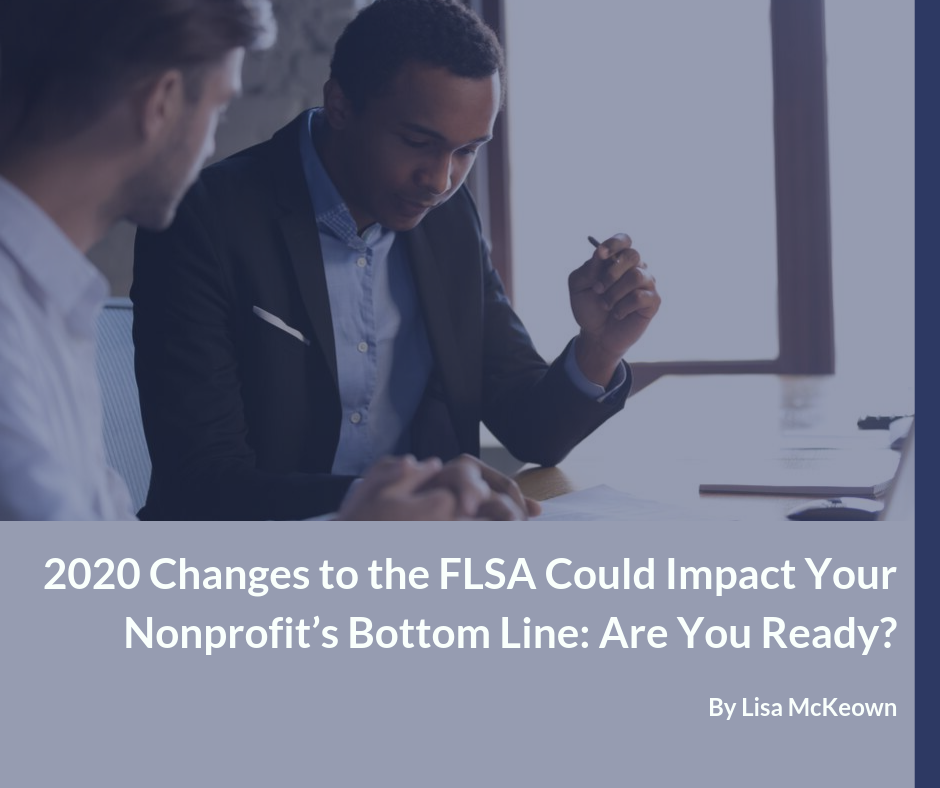WTOP: 5 ways nonprofits can…
In case keeping up with the Affordable Care Act (ACA) has not caused your head to explode, recent decisions regarding retirement plan administration may just push you over the edge.
In my years as an HR Consultant focused on benefits plans for small nonprofits, I have learned that most employers struggle to keep up with the ever changing regulations not only in relation to healthcare, but also with retirement plans. In fact, many employers have lucked out over the years by not experiencing a lawsuit by a plan participant – probably because participants have been paying as little attention as plan sponsors. This luck may be close to running out.
Earlier this month, the Department of Labor ruled that – to put it simply, anyone providing investment advice on a retirement plan is considered a Fiduciary. Previous to this ruling certain advisors were able to provide investment guidance to employers and participants without any associated risk and subsequent encouragement to be diligent about their advice. Although this new regulation is ultimately an added protection for individuals and employers, it is important for employers to understand the due diligence required in selecting retirement plan advisors and brokers.
ERISA clearly states that that anyone providing investment advice must act in the best interests of plan participants and beneficiaries and that failure to do so means that the advisor and plan sponsor who hires the advisor, could be sued by participants and face penalties. This regulatory change brings to the surface not only the plan advisor accountability but also the plan sponsor/fiduciary oversight and could lead to an increase in participant complaints and DOL audits.
There are a number of steps that Plan Sponsors/Fiduciaries must take to ensure their retirement plan is operating in compliance with regulations, the following is a short list of best practices that should help you get started with the investment oversight rules.
-
Educate yourself
– As always, the number one best practice in retirement plan administration is to stay on top of the retirement plan and work toward better understanding investments and fees. Hiring a certified investment advisor who is willing to take on full or shared fiduciary responsibility is the best option.
-
Review all service providers
– Fiduciaries should conduct a thorough review of individuals or companies providing investment advice to you or your employees through your plan. Included in this review should be a review of all service contracts to make sure you understand the service provider agreements and their interpretation of their fiduciary responsibilities. In doing so, Chris Carosa, President of Carosa Stanton Asset Management in Mendon, N.Y., and chief contributing editor to Fiduciary News.com suggests finding out if investment advisors are a “Securities and Exchange Commission-registered investment advisor (RIA)”.
-
Investment Policy Statement
– This is the first document an auditor or will ask for if your plan is audited by the DOL. Your investment fund provider or record-keeper can provide you with a sample for you to create your own statement. Having an investment policy statement shows a good faith effort in having a structured program to review investments.
-
Review your personal situation
– Have you personally been advised to pull your money from an investment fund? If so are the reasons for this specific to you or is this because the fund is not performing or fees are high. If the latter, it is a good idea for you to bring this information up at a Retirement Plan Committee meeting to investigate potential removal of the fund from the plan altogether.
-
Document EVERYTHING
– Few people intentionally include funds in the retirement plan because they intentionally want to cause harm. However, how does one prove this if sued. Having documentation of why the funds were chosen in the first place, review of the funds provided including dates and professional support and the process for continued review of the fund will significantly help you to make your case as a defendant or audit.
None of the above steps are cure-alls in and of themselves, but when considered as part of an overarching attempt to offer a balanced portfolio of investments for participants, employers large and small can do their best to mitigate risk from participants, ERISA and the DOL.





























